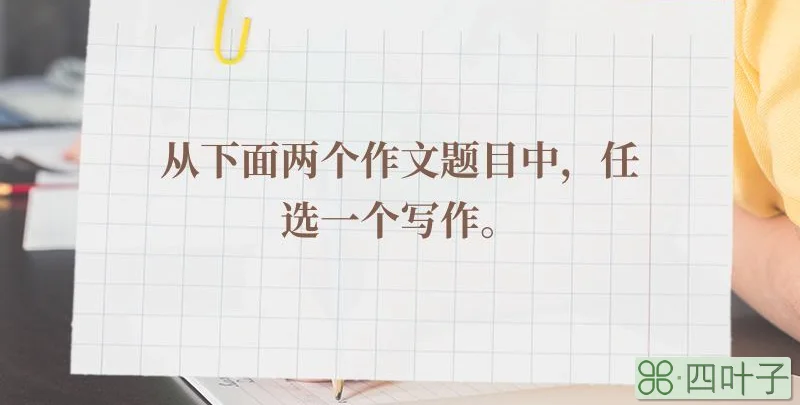被动语态的用法(被动语态的形式)

被动语态的正确使用方法,请详细解释被动语态的用法,谢谢
2.被动语态的基本结构: 主语+be +过去分词(+by+动作的发出者) ① 一般现在时:am/is/are+过去分词 如: Trees are planted every year. ② 现在进行时 am/is/are+ being +过去分词 如: The road is being repaired. ③ 现在完成时 have/has + been +过去分词 如: The work has been finished. ④ 一般过去时 was/were + 过去分词 如: The story was told by him. Many birds were killed last year. ⑤过去进行时 was/were+ being + 过去分词 如: The new house was being painted when I got home. ⑥过去完成时 had +been+ 过去分词 如: He told me that the work had been finished. ⑦一般将来时 will +be + 过去分词 如: The problem will be discussed tomorrow. ⑧ 过去将来时 would/should +be +过去分词 如: He said that the Christmas tree would be put up soon. ⑨情态动词的被动语态 情态动词+ be +过去分词 如: The problem must be solved soon. Children should be taught to love animals.
被动语态用法
被动语态的基本用法 一. 何时使用被动语态 1. 不知道谁是动作的执行者或没有必要 如:Paper is made from wood. The house is quite old. It was built in 1950. He was wounded in the fight. 2. 需要强调动作的承受者时 如:Calwlator can"t be used in the maths exam. Books and newspapers in the reading room mustn"t be taken away. He was awarded first prize in that contest. 3为了使语气婉转,避免提及自己或对方而使用被动语态,或由于修饰的需要,使用被动语态,使句子得以更好的安排. 如:The construction of the new lab must be completed by the end of next month. Electricity is used to run machines. 二. 被动语态的构成 1. be+done 可以是被动语态,也可以是系表结构形式.被动语态中,done可以带by短语,而系表结构中done相当于adj. 不带 by短语. 如:The question is settled. (系表结构) Such questions are settled by us. (被动语态) The composition is well written. (系表结构) The composition is written with great care . (被动语态) The job was well done. (系表结构) The job was well done by a skilled worker. (被动语态) 2. 许多verbs(broken, interested, shut, worried), 既可以用做adj.也可以在被动语态结构中做过去分词.句中如果有by,通常是被动语态. 如:I was worried abeutyou all night. (表状态) I was worried by mosquitoes all night. (表动作) The glass was broken by Jack. (表动作) The glass is broken. (表状态) I was frightened by his ghost story. She was frightened at the sight of a snake. 三. 不同形式的被动语态 1. 含有直宾和间宾的主动结构,变为被动时,可将其中一个宾语变为主语,另一个不动一般是主语结构的间接宾语变为被动的主语. 如:He showed me his pictures. I was shown his pictures by him. His pictures were shown to me by him. Aunt made me a new dress. I was made a new dress by aunt. A new dress was made for me by aunt. He sent me a birthday present. I was sent a birthday present by him. A birthday present was sent to me by him. 2含有复合宾语的主动句,宾补不变. (1) 将宾语变为主语,宾补不变. 如:They call her XiaoLi. She is called XiaoLi. He left the door open. The door war left open by him. (2) make, let, have,hear, watch, see, feel, notice. help既动词后变做宾补的不定式一般不加to,变为被动,必须加to . 如:My brother often made me do this and that when I was young. I was often made to do this and that by my brother when I young. I heard her move about in her room upstairs last night. She was heard to move about in her room uptairs last night. Did you see Jack take away the magazine? Was Jack seen to take away the magazine? 3. 情态动词的被动语态.是由情态V+be+p.p.构成 如:They can not find him. He can not be found. You must pay me for this. I must be paid for this. He can repair your watch. Your watch can be repaired. 4. 短语V的被动语态 一般来讲,只有及物V才有被动语态,因为只有vt才能有动作的承受者; 但有许多由不及物动词+介词及其他词类构成的短语动词,相当与及物动词,可以有宾语.因而可以有被动语态,但应注意短语V是一个不可分割的整体.变被动时,不可丢掉构成短语的prep或adv.这样的短语有:look after, listen to, look at, pay attention to, take care of, look forward to, make ues of,etc. 如:They had put out the fire before the fire--brigade arrived. The fire had been put out before the fire-brigade arrived. They will set up a new public school here. A new public school will be set up here. 5. 有些动词用主动形式表被动含义.. 如:The goods sells well. The door can"t open. 6.有些词如want,need,require和 be worth后面,v-ing形式为主动,意义为被动. 如:The room needs/wants/requires cleaning. The book is worth reading. 7.主动语态中的宾语是从句,变成被动时使用形式替代词it. 如:We know that Britain is an island country. It"s known that Britain is an island country. The teacher said that this book has been translated into several languages It"s said that this book has been franslated into several languages 8. 宾语为反身代词,相互代词及虚词it时,不用被动,只用主动. 如:I will do it myself. The man introduced himself as Mr. Wang. 9. 谓语动词是以下时,无被动. happen, belong to, suit, fit(适合), have, let, join, fall, last(延长),cost(花费) break out(爆发)appear, burst out(迸发),hold(容纳),lack(缺乏),agree with(同意). 10. 据说类动词:say,consider, think, report, know, believe, suggest, understand, hope, etc. 如:It is said that… There is said to be… Sth./Sb. is said to… 11.主动形式表被动 ① 感官动词:sound,taste, *** ell,fell,look,seem等主语是物时; ② 一些vi主动形式表被动含义open, close, shut, read, write, translate, wash, clean, lock, sell, wear, cut, cook, eat, weigh, drink, pay, draw, etc. ③不定式to blame,to let(出租)作表语时,主动形式表被动含义 ④表(sth)需要的need ,want,require等后的动名词用主动形式表被动含义 ⑤be worth后的动名词主动形式表被动含义
有谁知道英语中被动语态的详细用法
中文和英文都有主动语态、被动语态的语法。 比如你的题目中三个句子,1、3是被动态,2是主动态。中文中的被动语态不一定需要必须说出“被”字,主要看句子结构,放在句子前面的主语结构是动作的实施对象,就是被动语态。 你的问题补充中,“你吃了吗”是省略了“饭”这个实施对象,改成被动语态的时候,不能省略这个对象,所以要改成“饭吃了吗”。还有一个,“病被治好了吗”实际上也是省略了实施主体的,就是治病的“医生”,所以改成主动语态的时候不能省略这个主体,要改成“医生治好你的病了吗”。 所以,主动、被动语态,最主要的就是要看我们强调的是哪个方面,如果强调的是动作的实施主体,就用主动语态,于是实施的对象就无关紧要了;如果强调的是动作实施的对象,就用被动语态,这时实施的主体就可有可无了。 主动语态指主语是谓语动作的使动方。也就是说谓语的动作源自主语,而施加于宾语。相反,被动语态中,主语是谓语动作的受动方,如果有宾语的,宾语往往是谓语动作的使动方。 在语法机构上,主动语态和被动语态的区别主要在于,主动语态直接使用动词原形作为谓语,然后再在该动词原形的基础上施加时态和其他语法;而被动语态则使用系词+动词的过去分词作为谓语,各种时态和其他语法也施加在系词上。 举例: 主动:The snowslide killed him. 被动:He was killed by the snowslide. 意义均为:他死于雪崩。 英语中的被动语态使用得比汉语要多,要普遍,许多课本乃至实际应用中都常常涉及到这个问题。一般说来,当强调动作承受者,不必说出执行者或含糊不清的执行者时,多用被动式。须注意的是,许多地方与汉语不同。注意那些汉语中没有"被……"的意思,英语却用被动态。还要注意,英语的被动态往往由"by"引出,而有用介词"by"的短语往往又不是被动态,而是系表结构。还有些待殊现象,如…known to man(人类......所知),on foot步行(美国人有时用by foot),in carraige(乘四轮马车)等等。还有假主动,真被动的十几个常用词的用法,以及so heavy to carry而不用so heavy to be carried等习惯用法。有关这类情况,做到心中有数对全面掌握被动态,准确无误地解答习题非常关键,被动态必须涉及的是动词的各种时态变化的问题。英语的时态本来很复杂,怎样记住各自的被动形式呢? 首先要明确"将来进行无被动,现在完成进行 同"。这两种时态无被动形式。 另外,不及物动词带有同源宾语的动词,反身代词的动词和系动词都无被动形式。即便如此,还有不定式,动名词,分词,以及它们的复合结构)的被动态,再加上情态动词,助动词以及它们的疑问式和否定式从中掺杂,真是令人头痛,眼花缭乱。下面口诀就以动词do为例,即do did过去式done过去分词,以口诀形式总结各种时态的被动态,一定对你有所启示。 被动语态(一般现在时) 主动语态变被动语态时,主动语态句中的宾语变成被动语态句中的主语,主动语态句中的主语成为被动语态句中的动作的发出者。 《被动语态的口诀》 一般现、过用be done,be有人称、时、数变。 完成时态have done,被动将been加中间。 一般将来shall (will) do,被动变do为be done。 将来进行无被动,shall (will) be doing, 现在完成进行同,have (has) been doing。 现、过进行be doing, 被动be加being done。 情、助、有、是妥安排,一律随新主语变。 否定助后加not,疑问一助置主前。 主语恰是疑问词,直陈语序主在前。 一般情助加be done,双宾多将间宾变。 复合宾语宾变主,宾补、主补相应变。 特别注意:不用被动语态的情况: 1) 不及物动词或动词短语无被动语态: appear, die disappear, end (vi. 结束), fail, happen, last, lie, remain, sit, spread, stand break out, come true, fall asleep, keep silence, lose heart, take place. After the fire, very little remained of my house. 比较: rise, fall, happen是不及物动词;raise, seat是及物动词。 (错) The price has been risen. (对) The price has risen. (错) The accident was happened last week. (对) The accident happened last week. (错) The price has raised. (对) The price has been raised. (错) Please seat. (对) Please be seated. 要想正确地使用被动语态,就须注意哪些动词是及物的,哪些是不及物的。特别是一词多义的动词往往有两种用法。解决这一问题唯有在学习过程中多留意积累。 2) 不能用于被动语态的及物动词或动词短语: fit, have, hold, marry, own, wish, cost, notice, watch agree with, arrive at / in, shake hands with, succeed in, suffer from, happen to, take part in, walk into, belong to This key just fits the lock. Your story agrees with what had already been heard. 3) 系动词无被动语态: appear, be become, fall, feel, get, grow, keep, look, remain, seem, *** ell, sound, stay, taste, turn It sounds good. 4) 带同源宾语的及物动词,反身代词,相互代词,不能用于被动语态: die, death, dream, live, life She dreamed a bad dream last night. 5) 当宾语是不定式时,很少用于被动语态。 (对) She likes to swim. (错) To swim is liked by her.PS: 编辑本段有些动词可以带双宾语 在用于被动结构时,主动结构中的间接宾语变为主语时,直接宾语仍然保留在谓语后面;直接宾语变为主语时,直接宾语前通常加上介词for/to He was asked a number of questions at the press conference.在记者招待会上人们问了他很多问题 They are taught a lot of things in the kindergartens.他们在幼儿园被教给很多东西。 A new MP4 was given to him as birthday present/gift.作为生日礼物他收到了一个新MP4。 怎样把主动语态改成被动语态? 把主动语态改为被动语态非常简单,可以遵循以下几个步骤: 1. 先找出谓语动词; 2. 再找出谓语动词后的宾语; 3. 把宾语用作被动语态中的主语; 4. 注意人称、时态和数的变化。
求被动语态的用法和例句
被动语态的常见句型 1.主语(受动者) + be + 过去分词 + (by + 施动者).例如: He was scolded by his parents. 2.主语 + get + 过去分词 + 其它成分.例如: The boy got drowned last summer. She got fired because of her faults. 注意 使用这种结构时一般不能带有“by + 施动者” 3.情态动词 + be + 过去分词.例如: This problem must be worked out in half an hour. The baby should be taken good care of by the baby?鄄sitter. 4.带有双宾语(直接宾语和间接宾语)的主动句变为被动句,其主语可以是直接宾语,也可以是间接宾语.例如: She lent me a bike. 被动:1) I was lent a bike (by her). 2) A bike was lent to me (by her). 5.当“动词 + 宾语 + 宾语补足语”结构变为被动语态时,将宾语变为被动结构中的主语,其余部分不动.例如: Someone caught the boy *** oking a cigarette. 被动:The boy was caught *** oking a cigarette. 6.在使役动词have,make,get以及感官动词see,watch,notice,hear,feel,observe等后面加不定式作宾语补语时,在主动结构中不定式to要省略,但变为被动结构时,要加to.例如: Someone saw a stranger walk into the building. 被动:A stranger was seen to walk into the building. 7.如果宾语是that 从句,变为被动结构时一般用it作被动句的形式主语.例如: They know that he is an expert. 被动:It is known that he is an expert./ He is known to be an expert.
求被动语态的用法。
1.被动语态结构,be+及物动词的过去分词,不及物动词没有被动语态 2.当主语是谓语动词动作的承受者时,句子用被动语态 (主动句)I beat the dog。 (被动句)The dog is beaten by me. 3.各个时态的被动 am\is\are done一般现在时 was\were done一般过去时 am\is\are being done正在进行时 was/were being done 过去进行时 has\have been done现在完成时 had been done过去完成时 will be done一般将来时 would be done 过去将来时
英语中被动语态的用法?
一. 何时使用被动语态 1. 不知道谁是动作的执行者或没有必要 如:Paper is made from wood. The house is quite old. It was built in 1950. He was wounded in the fight. 2. 需要强调动作的承受者时 如:Calwlator can"t be used in the maths exam. Books and newspapers in the reading room mustn"t be taken away. He was awarded first prize in that contest. 3为了使语气婉转,避免提及自己或对方而使用被动语态,或由于修饰的需要,使用被动语态,使句子得以更好的安排。 如:The construction of the new lab must be completed by the end of next month. Electricity is used to run machines. 二. 被动语态的构成 1. be+done 可以是被动语态,也可以是系表结构形式。被动语态中,done可以带by短语,而系表结构中done相当于adj. 不带 by短语。 如:The question is settled. (系表结构) Such questions are settled by us. (被动语态) The composition is well written. (系表结构) The composition is written with great care . (被动语态) The job was well done. (系表结构) The job was well done by a skilled worker. (被动语态) 2. 许多verbs(broken, interested, shut, worried), 既可以用做adj.也可以在被动语态结构中做过去分词。句中如果有by,通常是被动语态。 如:I was worried abeutyou all night. (表状态) I was worried by mosquitoes all night. (表动作) The glass was broken by Jack. (表动作) The glass is broken. (表状态) I was frightened by his ghost story. She was frightened at the sight of a snake. 三. 不同形式的被动语态 1. 含有直宾和间宾的主动结构,变为被动时,可将其中一个宾语变为主语,另一个不动一般是主语结构的间接宾语变为被动的主语。 如:He showed me his pictures. I was shown his pictures by him. His pictures were shown to me by him. Aunt made me a new dress. I was made a new dress by aunt. A new dress was made for me by aunt. He sent me a birthday present. I was sent a birthday present by him. A birthday present was sent to me by him. 2含有复合宾语的主动句,宾补不变。 (1) 将宾语变为主语,宾补不变。 如:They call her XiaoLi. She is called XiaoLi. He left the door open. The door war left open by him. (2) make, let, have,hear, watch, see, feel, notice. help既动词后变做宾补的不定式一般不加to,变为被动,必须加to . 如:My brother often made me do this and that when I was young. I was often made to do this and that by my brother when I young. I heard her move about in her room upstairs last night. She was heard to move about in her room uptairs last night. Did you see Jack take away the magazine? Was Jack seen to take away the magazine? 3. 情态动词的被动语态。是由情态V+be+p.p.构成 如:They can not find him. He can not be found. You must pay me for this. I must be paid for this. He can repair your watch. Your watch can be repaired. 4. 短语V的被动语态 一般来讲,只有及物V才有被动语态,因为只有vt才能有动作的承受者; 但有许多由不及物动词+介词及其他词类构成的短语动词,相当与及物动词,可以有宾语。因而可以有被动语态,但应注意短语V是一个不可分割的整体。变被动时,不可丢掉构成短语的prep或adv.这样的短语有:look after, listen to, look at, pay attention to, take care of, look forward to, make ues of,etc. 如:They had put out the fire before the fire--brigade arrived. The fire had been put out before the fire-brigade arrived. They will set up a new public school here. A new public school will be set up here. 5. 有些动词用主动形式表被动含义。. 如:The goods sells well. The door can"t open. 6.有些词如want,need,require和 be worth后面,v-ing形式为主动,意义为被动。 如:The room needs/wants/requires cleaning. The book is worth reading. 7.主动语态中的宾语是从句,变成被动时使用形式替代词it. 如:We know that Britain is an island country. It"s known that Britain is an island country. The teacher said that this book has been translated into several languages It"s said that this book has been franslated into several languages 8. 宾语为反身代词,相互代词及虚词it时,不用被动,只用主动。 如:I will do it myself. The man introduced himself as Mr. Wang. 9. 谓语动词是以下时,无被动。 happen, belong to, suit, fit(适合), have, let, join, fall, last(延长),cost(花费) break out(爆发)appear, burst out(迸发),hold(容纳),lack(缺乏),agree with(同意). 10. 据说类动词:say,consider, think, report, know, believe, suggest, understand, hope, etc. 如:It is said that… There is said to be… Sth./Sb. is said to… 11.主动形式表被动 ① 感官动词:sound,taste, *** ell,fell,look,seem等主语是物时; ② 一些vi主动形式表被动含义open, close, shut, read, write, translate, wash, clean, lock, sell, wear, cut, cook, eat, weigh, drink, pay, draw, etc. ③不定式to blame,to let(出租)作表语时,主动形式表被动含义 ④表(sth)需要的need ,want,require等后的动名词用主动形式表被动含义 ⑤be worth后的动名词主动形式表被动含义 转自:高考招生网



















